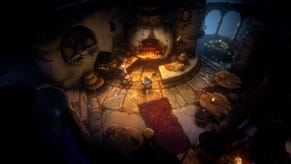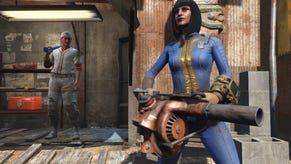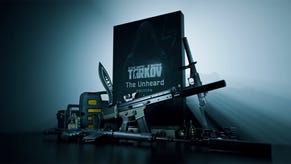SteamBox - Gabe Newell confirms Valve-made hardware
Valve boss Gabe Newell has confirmed that an internally-developed SteamBox is inbound, as distinct from Xi3's Valve-funded effort, giving scant details of its biometric controller and open nature.
Speaking with The Verge, finally confirmed long-tailed rumours of a console-like SteamBox, designed to capitalise on the standardised hardware benefits of consoles without losing the flexibility and universality of PC gaming.
"We’ll come out with our own [SteamBox] and we’ll sell it to consumers by ourselves. That’ll be a Linux box," he said.
"If you want to install Windows you can. We’re not going to make it hard. This is not some locked box by any stretch of the imagination."
Valve's SteamBox, codenamed Bigfoot, will include "a controller that has higher precision and lower latency" than existing peripherals. It probably won't have any kind of motion tracking - Newell said Wii Sports has already achieved the pinaccle of motion-controlled gaming - but may include other interetsing features.
"Biometrics. We have lots of ideas," he said. "I think you’ll see controllers coming from us that use a lot of biometric data."
The executive explained that hands and fingers have finer control than arms, so motion control dials precision down rather than up, while biometrics can do the opposite.
"Biometrics on the other hand is essentially adding more communication bandwidth between the game and the person playing it, especially in ways the player isn’t necessarily conscious of. Biometrics gives us more visibility. Also, gaze tracking. we think gaze tracking is gonna turn out to be super important," he added.
The SteamBox itself, as well as supporting Windows if desired, will have a web browser, so users can "absolutely" do anything with it that they could with any other Internet-connected PC, such as watching streaming services like Netflix.
Moreover Newell wants Steam itself to become more open.
We tend to think of Steam as tools for content developers and tools for producers. We’re just always thinking: how do we want to make content developers' lives better and users' lives a lot better? With Big Picture Mode we’re trying to answer the question: "how can we maximize a content developers investment?" It’s not a lot easier for me to build content that spans running on a laptop, running in a living room, and running on the desktop, as opposed to completely re-writing your game.
"Right now there’s one Steam store. We think that the store should actually be more like user generated content. So, anybody should be able to create a store, and it should be about extra entertainment value," he said.
Examples of user-built stores include those themed around particular publishers or personal preferences, allowing like-minded users to easily curate and share their gaming experiences.
As for how and where the SteamBox will be used, Newell said it will also act as a server and expects future tech to serve up to eight game calls at a time, allowing it to be used on every screen in the house.
Valve is also keen to get in on the mobile market and has a second project called Littlefoot looking into touch screens and the smartphone and tablet space.
Newell said Valve sees a future where there are multiple SteamBox devices from different manufacturers, at various levels of power to suit different gamers' needs, explaining how Bigfoot fits in with Xi3's Piston.
Newell has much of interest to say in the full article besides this brief summary, so do lick through and check it out.
The existence of Valve's SteamBox was outed earlier in the week by a report from Germany. Speculation suggests the product will be revealed at GDC 2013.
Thanks, Kotaku.










